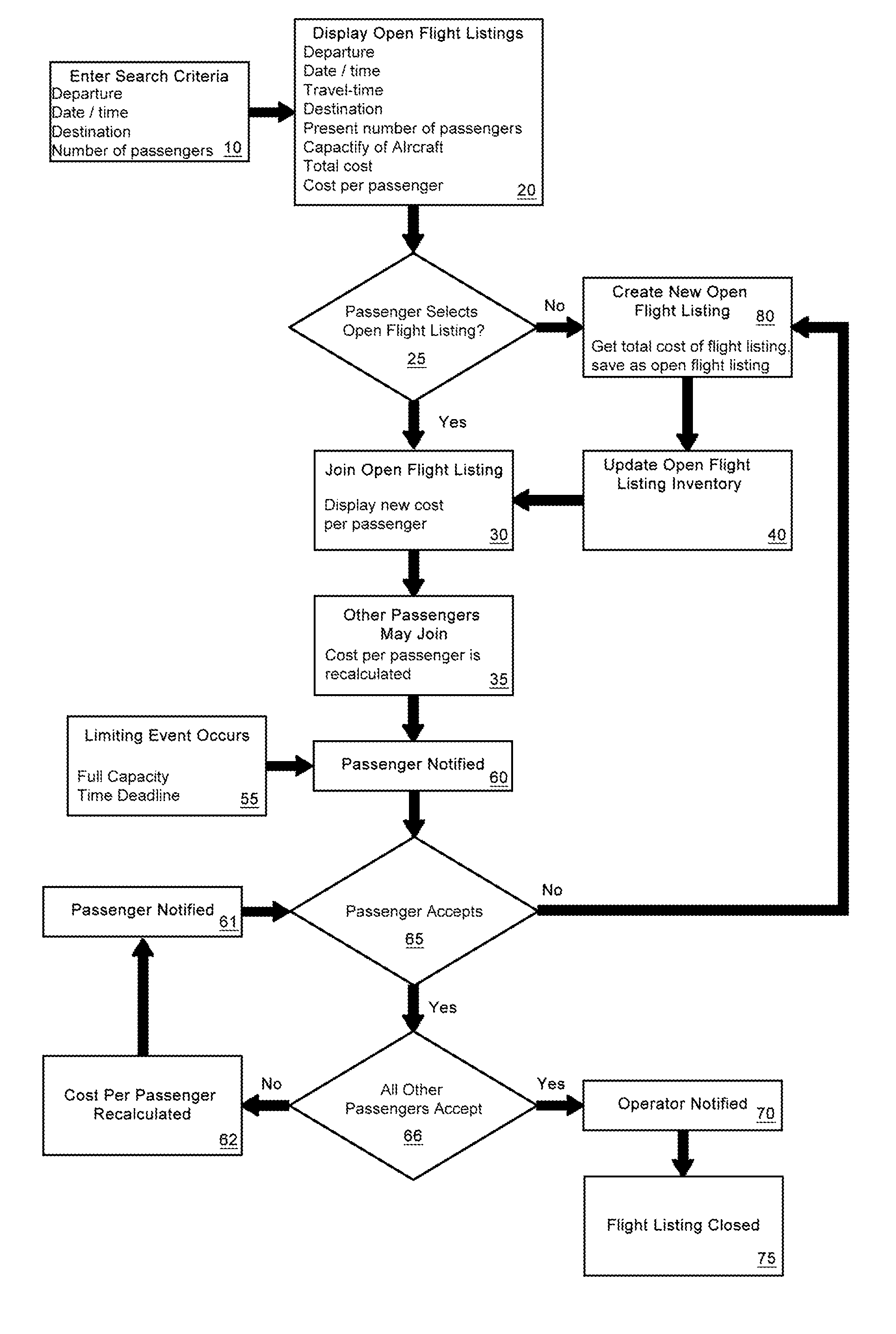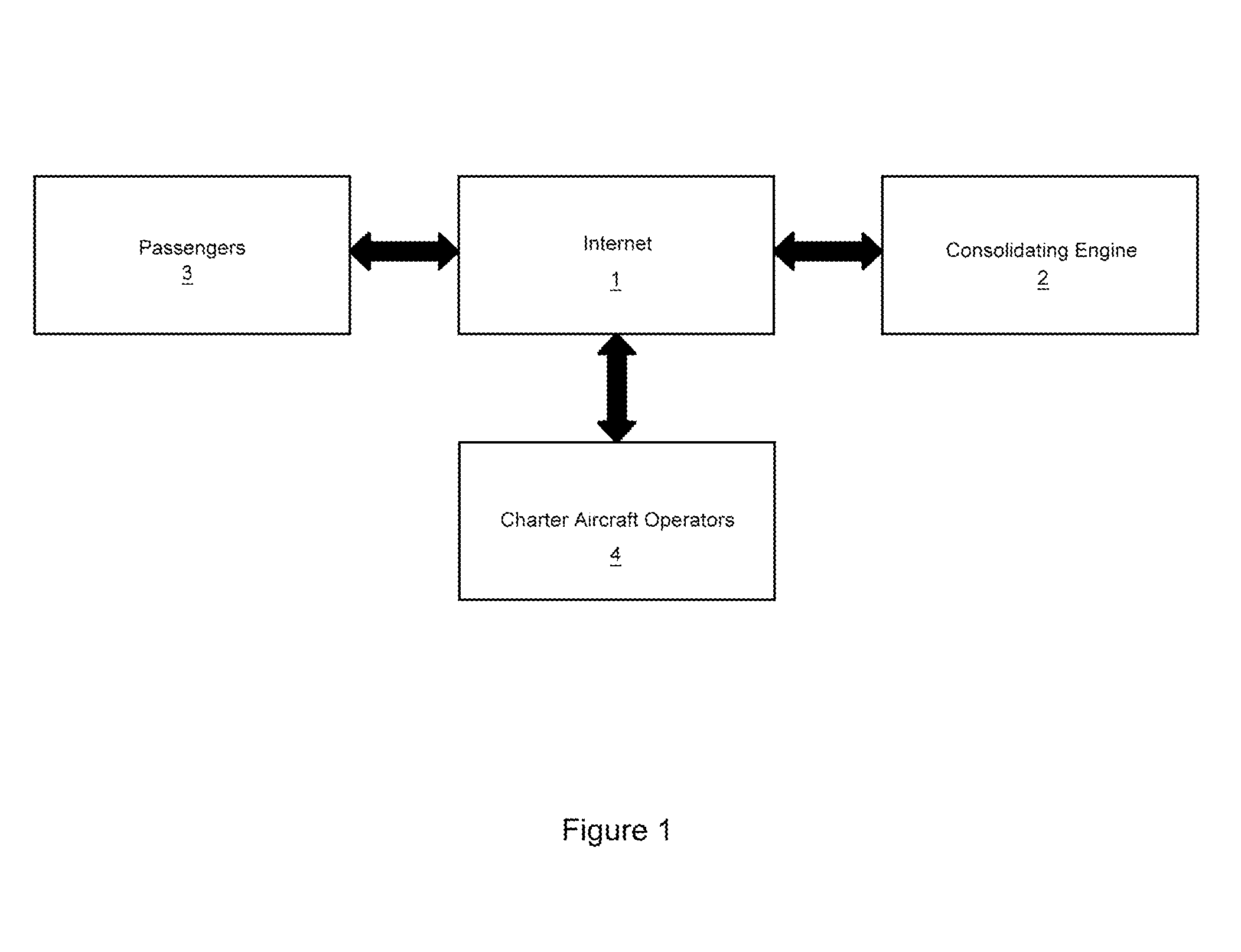System and Method of Booking Transportation
a transportation system and transportation technology, applied in the field of system and method for booking transportation, can solve the problems of inability to cancel the journey, inability to compete with and inability to match the reliability of the schedul
- Summary
- Abstract
- Description
- Claims
- Application Information
AI Technical Summary
Benefits of technology
Problems solved by technology
Method used
Image
Examples
Embodiment Construction
[0055]Many aspects of the invention can be better understood with the references made to the drawings below. The components in the drawings are not necessarily drawn to scale. Instead, emphasis is placed upon clearly illustrating the components of the present invention. Moreover, like reference numerals designate corresponding parts through the several views in the drawings.
[0056]FIG. 1 is a schematic view of the interactions of the system with passengers and charter aircraft operators. Passengers 3 interact with the system 2, also called the consolidating engine, via the Internet 1. Preferably, passengers 3 access and interact with web accessible servers of the system 2 through a web browser. The system 2 also interacts with charter aircraft operators 4. This can be through various means. One such means is through a standard algorithm that is integrated into the system. Charter aircraft operators 4 can manipulate various settings directly or through the Internet using a web browser...
PUM
 Login to View More
Login to View More Abstract
Description
Claims
Application Information
 Login to View More
Login to View More - R&D
- Intellectual Property
- Life Sciences
- Materials
- Tech Scout
- Unparalleled Data Quality
- Higher Quality Content
- 60% Fewer Hallucinations
Browse by: Latest US Patents, China's latest patents, Technical Efficacy Thesaurus, Application Domain, Technology Topic, Popular Technical Reports.
© 2025 PatSnap. All rights reserved.Legal|Privacy policy|Modern Slavery Act Transparency Statement|Sitemap|About US| Contact US: help@patsnap.com



